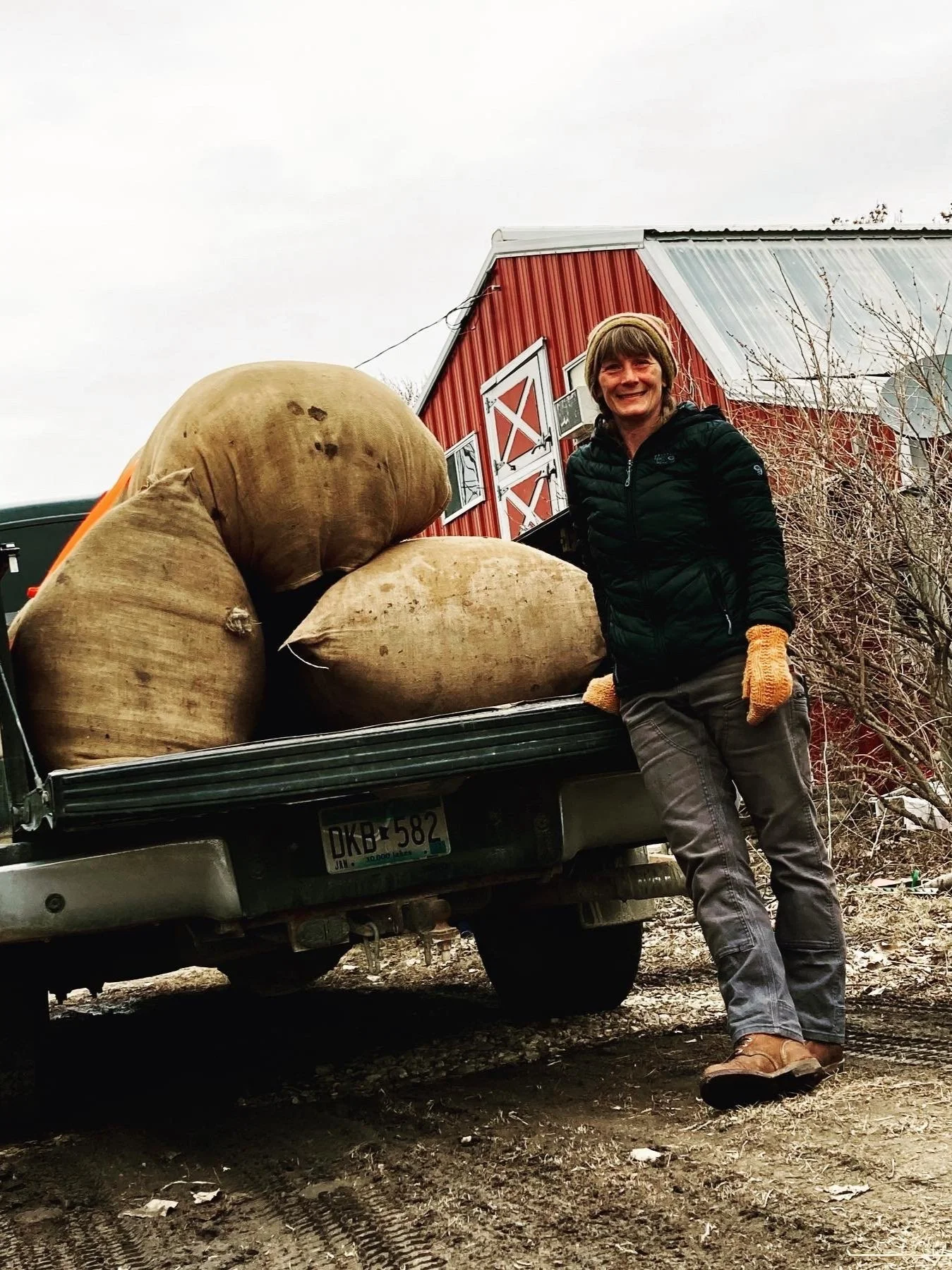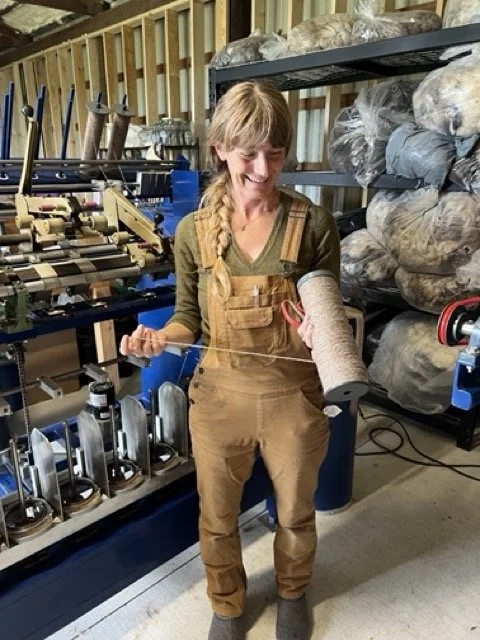By: Theresa Bentz, Get Bentz Farm & Badgerface Fiber Mill
“There is just no money in wool anymore, might as well sell off the flock and get hair sheep.
It’s not even worth taking to the broker, the burlap sack and the price of gas has more value than the wool.”
The American wool industry has been on a slow decline since the 1990’s when polar fleece and synthetic outerwear became ultra popular. It hit an all time low during the COVID-19 pandemic. Shepherds could expect pennies to the pound for their fleece, often costing more to shear the animal than the value of the fleece. Many shepherds in the tri-state area (MN, WI, IA) focus their flocks and production on lamb meat, which has increased in value thanks to immigrant communities who eat more lamb than the typical American household. This increased market for lamb meat has drawn the focus away from wool production, fine fleece, or VM minimal fleece. The focus is instead on raising large lambs that grow fast and bring a good price on the larger market. But the wool is not worthless.
In 2021 I went out on a limb and purchased a cottage industry mill to process my own fiber and the fiber of others in the area. I quickly realized that I needed to find more fleece, and lots of it, to keep up with demand for roving and rug yarn (at the time I was not yet making yarn). I connected with my shearer friends who helped me source bales of wool and I would pay them 2x what the market value for the wool, which made everyone quite happy. A bale of wool is a large burlap sack stuffed with compressed wool that weighs about 250-500 lbs. I found that if I went to the shearing I could quickly skirt the wool (remove debris and damaged wool from the fleece) before it made it into the bale. This way, I would save myself time later by picking out the specific fleeces I wanted. This was also a great way to get to know my local fiber community, spend time outside, chat with shearers and shepherds, and get real dirty.
In the late part of 2022, just as I was getting ready to think about what types of wool I wanted to use for my mill, I heard rumors of Mid-State Wool Growers Coop closing. Shearers were concerned that they would have a harder time selling the wool after shearing, and that the shepherds would be hit hard. I wondered why the market was falling apart, and how we can show the value of all wool types, not just the next-to-skin fine fiber that most consumers fixate on. I also wondered what I could do with my limited resources.
“It’s got to be able to go against the skin,” Rowe said, for farmers to get a good and fair price for their wool. “The comfort factor with coarse wool is nowhere near what is deemed acceptable, or even excellent.” (Wagoner, 202
Why is fine wool the only wool that has value on the larger market? Yes, fine wool like Rambouillet and Merino is absolutely lovely. It is soft and buttery, and yes, it lacks the itch factor. But do we need it for everything? How many of us wear a shirt under our woolen sweaters? And why do we need super soft wool on our feet, which are designed to endure rough terrain and textures? And what about the washability of wool? Is there a wool type that can be washed and won’t shrink in the washer that could replace superwash (a wool type that is treated to be resistant to felting, the production of which uses harsh chemicals and large quantities of water)?
These were all questions I had when hearing about the closure of the cooperative. Meeting with shepherds in my area, I put my focus into answering them.
Fine wool is the only wool on the market that has any value because the value is placed in consumer demand - driven largely by marketing. We are told that wool is itchy, that it is hard to wash and will shrink. As a result, consumers demand a soft, washable wool and the market creates superwash merino to meet that demand. Perhaps our focus should be in educating consumers about the environmental impact of superwash and about qualities of other types of wool to help dispel the myths we have been told.
People are always amazed when I tell them that I can wash my down wool socks or mittens in the washer on the regular cycle because the structure of the fiber is resistant to felting. Or that my hat made of Cheviot wool never felts, doesn’t itch or pill, and holds the stitch definition perfectly. As a shepherd, I love my Suffolk sweater and Cheviot mitts because I can wash them on hot after they become soiled, and the hay doesn’t stick to them! If more consumers knew that the wool the current market deems as having absolutely no value can be washed over and over again, do you think they would want it and thus give it value? I believe so.
As a fibershed I believe the closure of the cooperative gives us an opportunity to advocate and educate the public about all the different types of fiber in our communities and their value. Not every shepherd will want to market their fiber item, and that is okay. The niche market, where many small shepherds find their market for their wool, isn’t sustainable. Niche markets come and go with the changing seasons. What is hot today might be gone tomorrow. We need security.
With this closure we shouldn’t put the weight of this on the shoulders of the shepherds, but rather increase education and advocacy about all wool and fiber types and how the market has failed not only the consumer but also the producer. Because at the end of the day, if wool has no value in the larger market how can we ever expect it to have a value in the niche market?
Learn more about Get Bentz Farm & Badgerface Fiber Mill at https://www.getbentzfarm.com/
To learn about breeds and fiber types available within the Three Rivers Fibershed, check out the Regional Fiber Sourcebook and learn more about the Stewards creating local fiber with the Steward Directory.


























